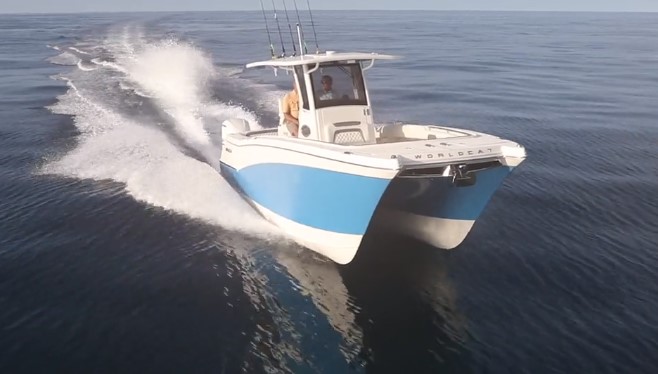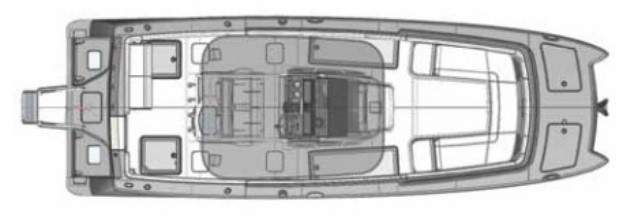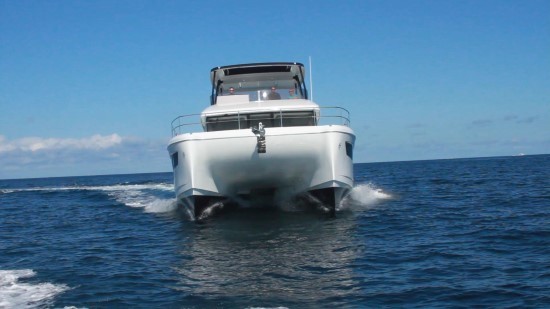Are Power Cats More Stable than Monohulls?

Today’s question comes from a BoatTEST.com member who wants to know more about catamarans: He asks, “Are power catamarans considered to be as stable as V-hull boats for offshore fishing? And are power catamarans gaining or losing market share among boaters?”

and day cruising.
Which is more stable, a catamaran or a monohull? This answer is easy. Despite what you may have read in some boating magazines, a catamaran is almost always more stable than a V-bottom monohull. In fact, the deeper the V, the more prone to rolling the monohull becomes. For example, a monohull with a 24-degree deadrise at the transom is the design with the most potential to roll; more so than, say, a 20- or a 17-degree-deadrise hull, all things being equal.
The reason for this is simple. Deep-V monohulls have their deepest center of buoyancy at the keel, and the hull is less buoyant at the chines, which often are flat or reversed to dampen roll. Each hull of a catamaran provides buoyancy closer to the beam ends of the boat, therefore causing a high degree of resistance to heeling and rolling. In fact, a catamaran is several times more resistant to heeling than virtually any monohull – and is, initially, far more resistant to capsizing.
Catamarans also provide a more comfortable ride, compared to most monohulls, even those with a 24-degree deadrise. In large part the reason for this is that catamaran hulls cut through waves rather than plow over them. The 24-degree-deadrise bottom was designed for high-speed monohulls leaping from wave to wave and the deep-V provided the maximum cushioning effect when landing on water. Since catamarans generally cut through waves, they don’t “land” and there is reduced pitching moment.
This is why virtually all high-speed passenger ferries are catamarans.
Are catamarans gaining or losing market share among boaters? Both catamarans for fishing and coastal cruising, as well as large offshore cruising power cats, are gaining favor among the boating public, including fishermen. In particular, large cruising cats have seen the largest percentage growth of any type of boat in their size range. Charter fleets all over the world are increasingly going to power cats because of their room, riding comfort, and stability. Here, catamarans have grown exponentially in market share and are the majority of powerboats available for charter.

World Cat 280 CC-X.



If you have a question about anything to do with boating, Ask a Question...